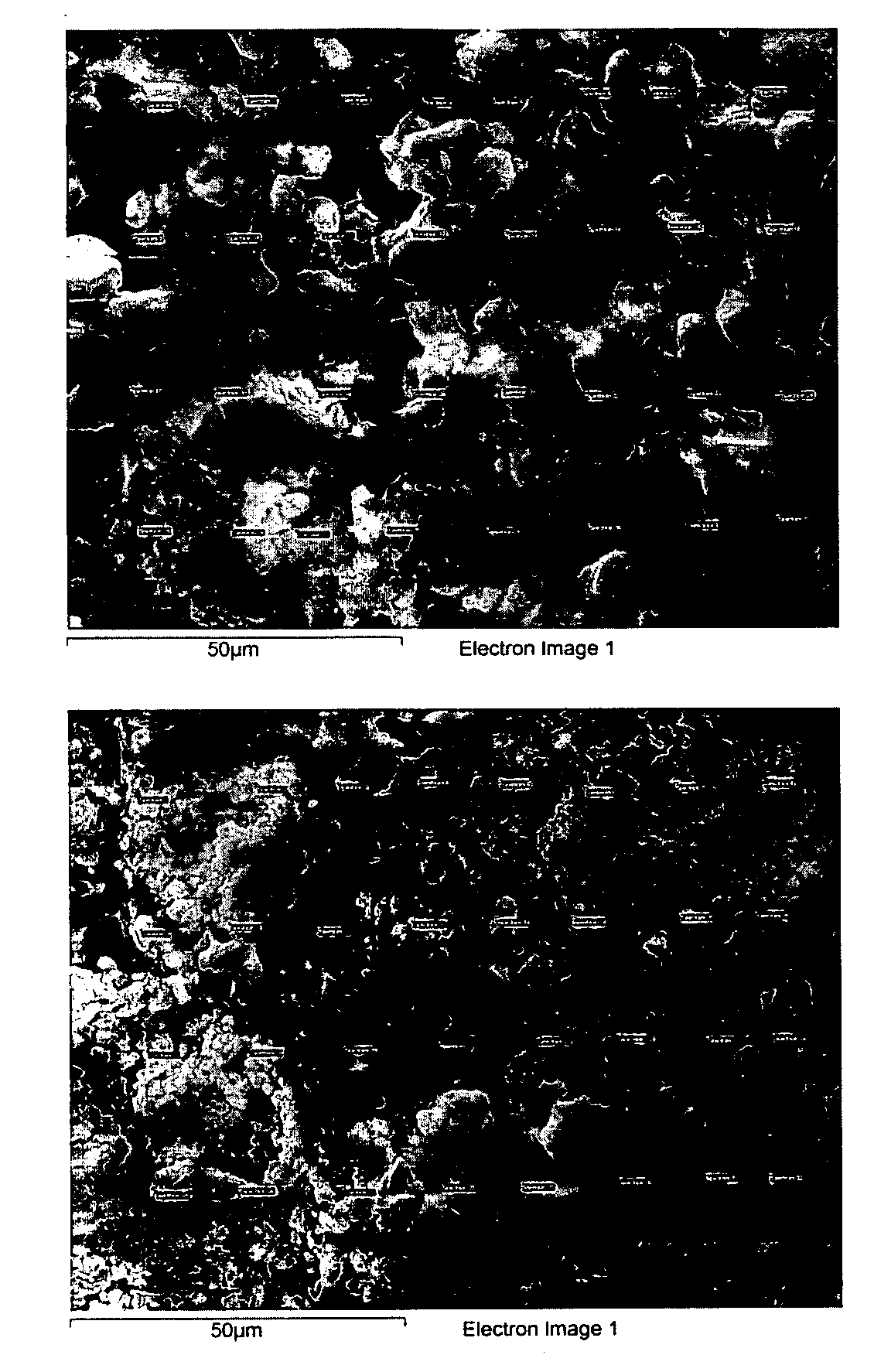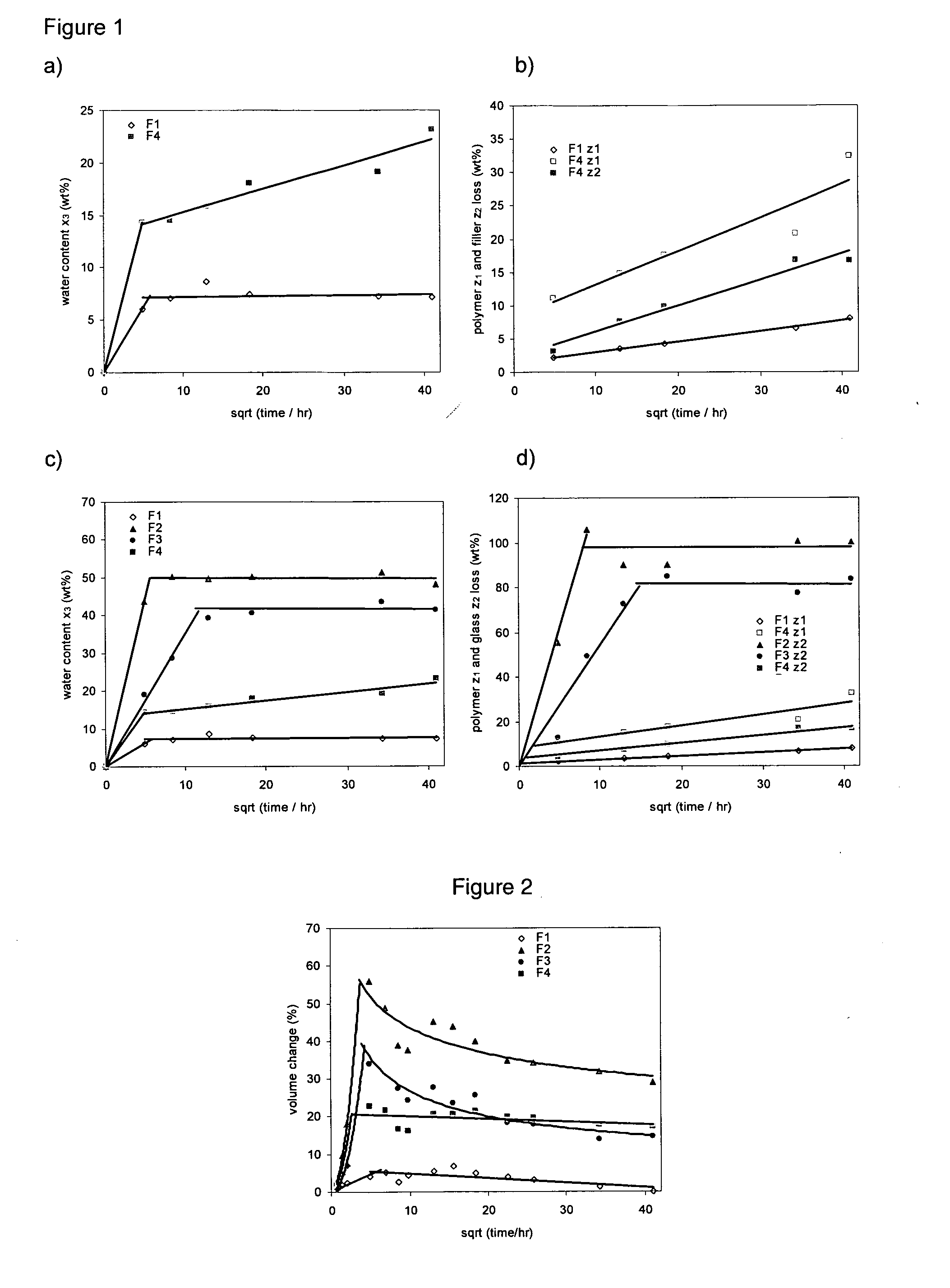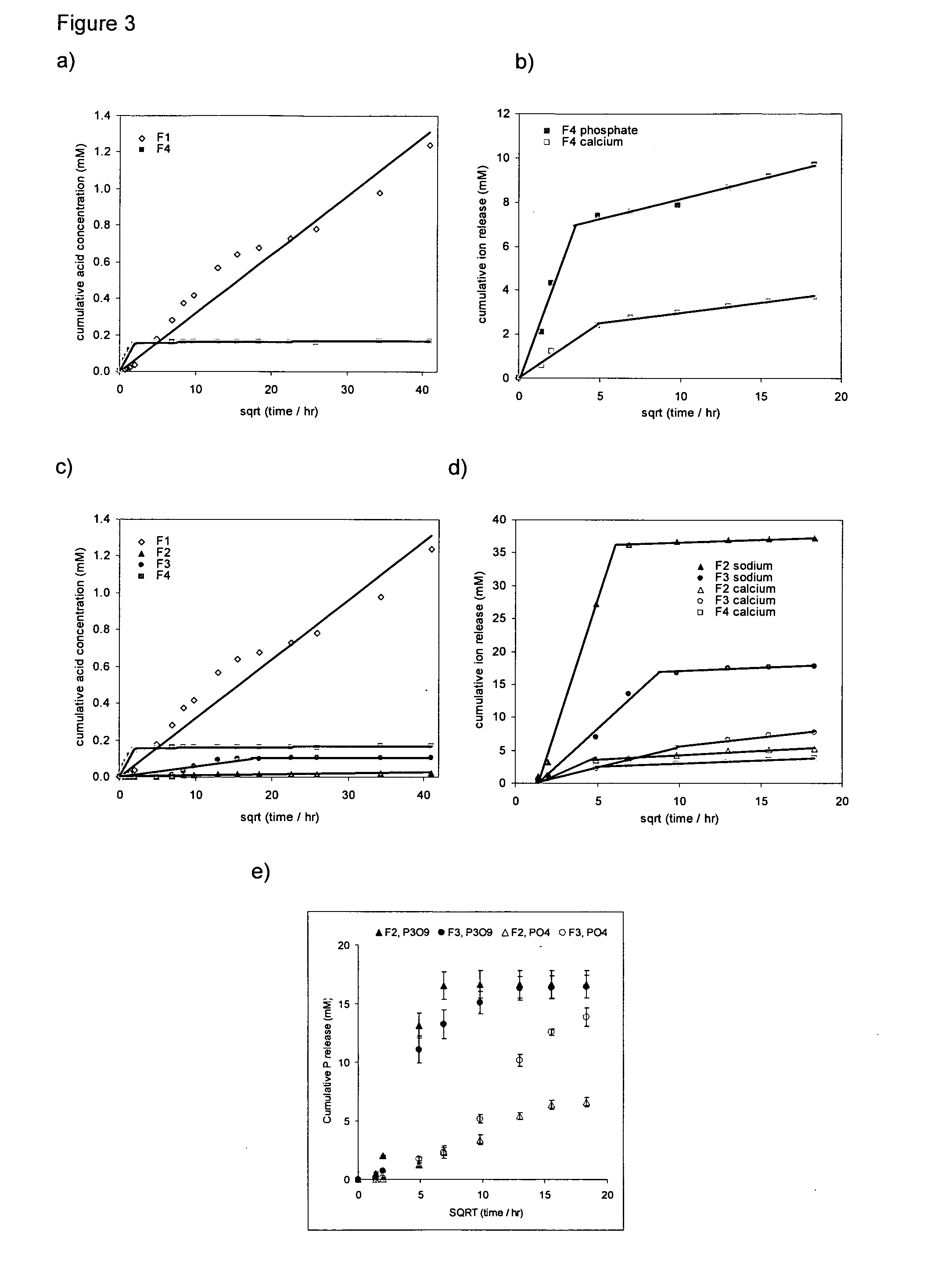Formulations and composites with reactive fillers
a technology of reactive fillers and composites, applied in the field of forms, can solve the problems of reducing the strength of the surrounding polymer, weakening the surrounding polymer, and bacterial microleakage between the tooth and the restoration, and reducing the risk of restorative dentistry
- Summary
- Abstract
- Description
- Claims
- Application Information
AI Technical Summary
Benefits of technology
Problems solved by technology
Method used
Image
Examples
example 1
Composite Polymerisation / Set
[0277]To confirm that fillers can be incorporated within formulations without preventing crosslinking polymerisation of the methacrylate groups, formulations were prepared with 0:1 or 2:1 filler to monomer ratio.
[0278]Method: Three samples of each unset formulation were placed in a 1 mm deep ring maintained at 37° C. They were then exposed to blue light (400 mW / cm3) for 80 s and FT-IR spectra were obtained every 23 s for 40 minutes. The final polymerisation percentages for formulations F1 to F3 were determined by comparing the height of the Raman methacrylate C═C 1640 cm−1 peak (in background subtracted and 2900 cm−1 peak normalised spectra) before and 24 hours after curing. With F4 this had to be estimated from a weaker FT-IR 1640 cm−1 peak because of its high fluorescence Raman background. The percentage reaction as a function of time was then obtained by combining final percentages with the FTIR absorbance change variation with time at 1716 and 1734 cm...
example 2
Polymer Degradation in Water
[0280]To assess water sorption and degradation of the polymer and composite, samples of fully polymerised material discs 8 mm diameter and 1 mm depth were placed in water and their water content, filler and polymer loss determined via gravimetric and density studies as a function of time.
[0281]Method: Specimens of each formulation of known initial mass, m0 (average of 72 mg for F1 and 120 mg for the composites) were placed upright in the conical end of an individual sterilin tube, allowing contact with water (10 cm3 adjusted to pH 7 and incubated at 37° C.) on all sides. For all samples the water was exchanged at 0, 0.5, 1, 2 and 4 hours, 1, 2, 4, 7 and 10 days as well as 2, 3, 4, 7 and 10 weeks.
[0282]a) Volumetric and Density Changes
[0283]At all the above time points, three specimens of each formulation were removed from the tube, the external surface blotted dry with tissue paper and their mass, volume and density assessed gravimetrically before placing...
example 3
Sample Storage Solution Composition
[0296]Method: Cumulative storage solution acid content per specimen, Ca was calculated assuming
pH=-log[H*]and8Ca=∑0t[H+]t9
[0297][H+] is the molar hydrogen ion concentration. For the polymer, the average standard deviation for cumulative acid release was 12%. Provided acid released from the polymer is not neutralised and the same degradation process is occurring at all times Ca should be proportional to the mass of polymer eroded and given by
Ca=m0MVz110
[0298]m0, V and M are the initial sample mass, storage solution volume and average mass per acid group of the eroded polymer fragments.
[0299]Other ion release, both cation and anion, into these storage solutions up to 2 weeks was additionally monitored. Analysis of all solutions was completed within 30 minutes from the end of the sample storage period. The average error for all ion release determined using this technique was 8% (excluding data in the first 4 hours).
[0300]For the phosphate-glass compos...
PUM
| Property | Measurement | Unit |
|---|---|---|
| Fraction | aaaaa | aaaaa |
| Percent by mass | aaaaa | aaaaa |
| Fraction | aaaaa | aaaaa |
Abstract
Description
Claims
Application Information
 Login to View More
Login to View More - R&D
- Intellectual Property
- Life Sciences
- Materials
- Tech Scout
- Unparalleled Data Quality
- Higher Quality Content
- 60% Fewer Hallucinations
Browse by: Latest US Patents, China's latest patents, Technical Efficacy Thesaurus, Application Domain, Technology Topic, Popular Technical Reports.
© 2025 PatSnap. All rights reserved.Legal|Privacy policy|Modern Slavery Act Transparency Statement|Sitemap|About US| Contact US: help@patsnap.com



